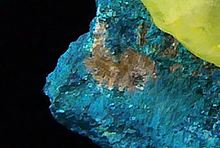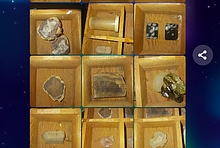Home PageAbout MindatThe Mindat ManualHistory of MindatCopyright StatusWho We AreContact UsAdvertise on Mindat
Donate to MindatCorporate SponsorshipSponsor a PageSponsored PagesMindat AdvertisersAdvertise on Mindat
Learning CenterWhat is a mineral?The most common minerals on earthInformation for EducatorsMindat ArticlesThe ElementsThe Rock H. Currier Digital LibraryGeologic Time
Minerals by PropertiesMinerals by ChemistryAdvanced Locality SearchRandom MineralRandom LocalitySearch by minIDLocalities Near MeSearch ArticlesSearch GlossaryMore Search Options
The Mindat ManualAdd a New PhotoRate PhotosLocality Edit ReportCoordinate Completion ReportAdd Glossary Item
Mining CompaniesStatisticsUsersMineral MuseumsClubs & OrganizationsMineral Shows & EventsThe Mindat DirectoryDevice SettingsThe Mineral Quiz
Photo SearchPhoto GalleriesSearch by ColorNew Photos TodayNew Photos YesterdayMembers' Photo GalleriesPast Photo of the Day GalleryPhotography
╳Discussions
💬 Home🔎 Search📅 LatestGroups
EducationOpen discussion area.Fakes & FraudsOpen discussion area.Field CollectingOpen discussion area.FossilsOpen discussion area.Gems and GemologyOpen discussion area.GeneralOpen discussion area.How to ContributeOpen discussion area.Identity HelpOpen discussion area.Improving Mindat.orgOpen discussion area.LocalitiesOpen discussion area.Lost and Stolen SpecimensOpen discussion area.MarketplaceOpen discussion area.MeteoritesOpen discussion area.Mindat ProductsOpen discussion area.Mineral ExchangesOpen discussion area.Mineral PhotographyOpen discussion area.Mineral ShowsOpen discussion area.Mineralogical ClassificationOpen discussion area.Mineralogy CourseOpen discussion area.MineralsOpen discussion area.Minerals and MuseumsOpen discussion area.PhotosOpen discussion area.Techniques for CollectorsOpen discussion area.The Rock H. Currier Digital LibraryOpen discussion area.UV MineralsOpen discussion area.Recent Images in Discussions
Identity HelpID of Ag and Au mineral inclusions in luzonite
5th Dec 2016 00:43 UTCKyle Beucke 🌟
The deposit is high-sulfidation epithermal gold-silver. Lots of enargite, luzonite, pyrite. Silver has always been recognized as being associated with the Cu minerals, but silver minerals (to my knowledge) have not been identified.
These are not polished mounts, and I realize that limits the usefulness of these results.
The first inclusion contains gold and silver, and uytenbogaardtite was offered as a possibility. Multiple scans were taken with similar results:
The second spectrum is of a mineral found abundantly disseminated through another sample of luzonite (with minor famatinite, enargite, and tetrahedrite, based on XRD):
A silver sulfosalt was offered as a possibility.
I am wondering if these spectra could have picked up elements (Cu, Sb, As, Te, S) from the surrounding luzonite. If so, perhaps the first spectrum could be a silver-gold telluride with luzonite contamination, and the second spectrum could be acanthite or stromeyerite with luzonite contamination?
Any other guesses?
Thank you,
Kyle
5th Dec 2016 00:58 UTCReiner Mielke Expert
5th Dec 2016 03:39 UTCKyle Beucke 🌟
These inclusions are tiny (perhaps in the 20-100 micron range) and dispersed in Cu sulfosalt, and I am not the one doing the analysis, so unfortunately, I don't think trying to isolate an inclusion and look at its characteristics is practical! I did not know they were even present until the analysis was done.
Kyle
5th Dec 2016 04:08 UTCJeff Weissman Expert
5th Dec 2016 06:10 UTCChristian Auer 🌟 Expert

5th Dec 2016 06:34 UTCMarcus Voigt
Reading your first lines, the thought came to me that similar problems expected me. :-)
With ore samples of a similar paragenesis from Bulgaria.
http://www.mindat.org/loc-16254.html
Enargite-Luzonites (as inclusions) do not appear to be optically separable.
Tellurides are something particularly fine.
Unfortunately at the moment no time for my samples. The future will show it.
Because we are on the topic : I am looking for a sample with Kostovite (preferably from Chelopech) in the purchase or exchange.
Have a nice day
Marcus
5th Dec 2016 12:52 UTCReiner Mielke Expert
On the scale you are talking about, like others have suggested, you will need polished sections unless you can isolate an unusually large monomineralic grain. Personally when it comes to material that size it stops being fun and becomes work so I avoid such material. In other words if I can't isoloate a single grain at 40X I don't bother with it and stop looking. But then to each his own. Interesting material never the less and I would keep looking because there is a chance you could find an unusually large grain. For example froodite almost always occurs in micron size grains only observable in polished sections but sometimes you get lucky and can find something like this : http://www.mindat.org/photo-587166.html
12th Apr 2017 19:25 UTCKyle Beucke 🌟
Here is an electron image of one analyzed area:
Two analyzed acanthite inclusions are labeled. The surrounding gray is copper sulfosalt (probably luzonite, based on composition and XRD of same specimen), which also has some silver (~1%).
These acanthite inclusions are irregular in shape and there does not appear to be any pattern to their occurrence. Any suggestions on how to interpret the paragenesis here? Am I correct in assuming the acanthite must be hypogene and not supergene? This assumption is based on: 1. No identified supergene minerals associated with the acanthite, and 2. The acanthite does not follow any obvious fracture in the copper sulfosalt, but rather is disseminated through it. Is it more likely that the acanthite was deposited at the same time as the copper sulfosalt, or did one likely precede the other?
Thanks,
Kyle




Mindat.org is an outreach project of the Hudson Institute of Mineralogy, a 501(c)(3) not-for-profit organization.
Copyright © mindat.org and the Hudson Institute of Mineralogy 1993-2024, except where stated. Most political location boundaries are © OpenStreetMap contributors. Mindat.org relies on the contributions of thousands of members and supporters. Founded in 2000 by Jolyon Ralph.
Privacy Policy - Terms & Conditions - Contact Us / DMCA issues - Report a bug/vulnerability Current server date and time: April 18, 2024 06:09:33
Copyright © mindat.org and the Hudson Institute of Mineralogy 1993-2024, except where stated. Most political location boundaries are © OpenStreetMap contributors. Mindat.org relies on the contributions of thousands of members and supporters. Founded in 2000 by Jolyon Ralph.
Privacy Policy - Terms & Conditions - Contact Us / DMCA issues - Report a bug/vulnerability Current server date and time: April 18, 2024 06:09:33














